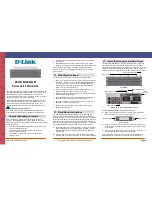
for a remote device} = max {m, n}. Then, multiply max by the average traffic of application
data y Mbit/s to obtain the data amount in this duration. Extra overhead of 25% should also
be accounted.
That is, max {m, n} x y Mbit/s x (1 + 25%).
l
RPO of the customer
Controlled by the adjustable parameter (latencyprot & srlprot) of the VVR.
describes the supposed actual environment of carrier A.
Table 8-10
Descriptions of parameters in the scenario of carrier A
Parameter Name
Value
Peak traffic of application data
1 GB/hour
Duration of peak traffic
8:00 am to 8:00 pm
Average traffic of application data
250 MB/hour
Average of application write I/O
2 KB
Number of disaster recovery centers
1
Replication mode
Synchronous replication
Maximum duration of service interruption
accepted by the customer
24 hours
Maximum outage for a remote device
4 hours
RPO required by the customer
p minutes
The following conditions must be met when you are planning the capacity.
l
If synchronous replication is applied, the bandwidth must meet the requirement of the peak
traffic; otherwise, the latency of a write operation will be quite long.
Value of the bandwidth: 1 GB x 8 bit/(60 x 60s) = 8000 Mbit/3600s = 2.22 Mbit/s
l
If asynchronous replication is applied, set the bandwidth by calculating the average traffic.
That is, (1 GB/hour x 12 hours + 250 MB/hour x 12 hours)/24 hours x 60 x 60 = 1.25 GB/
2 x 60 x 60s = 1.25 GB x 8 bit/2 x 60 x 60s = 1.39 Mbit/s.
l
SRL size
Since the maximum duration of service interruption accepted by the customer is 24 hours,
the SRL must bear data in this duration; otherwise data resynchronization will start, or even
the upper layer applications may stop working. So the SRL size is:
1 GB/hour x 12 hours + 250 MB/hour x 12 hours = 15 GB
Besides, the extra information about maintaining the replication data consumes about 25%
of the storage space. So the SRL size is:
15 GB x 1.25 = 18.75 GB
Based on the previous information, the capacity is planned as follows.
The 66 TB effective capacity required by carrier A is planned as follows.
OceanStor VIS6000 Series Virtual Intelligent Storage
System
Initial Configuration Guide
8 Configuration Instance
Issue 08 (2010-05-10)
Huawei Proprietary and Confidential
Copyright © Huawei Technologies Co., Ltd.
8-11
















































